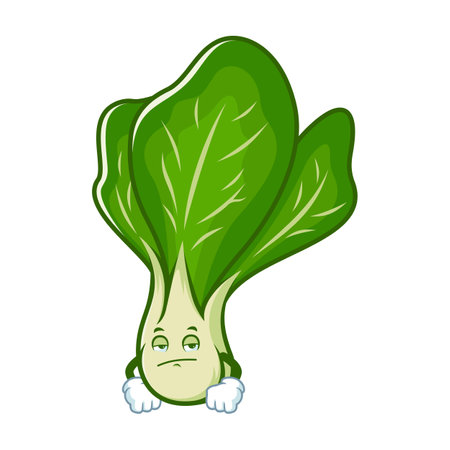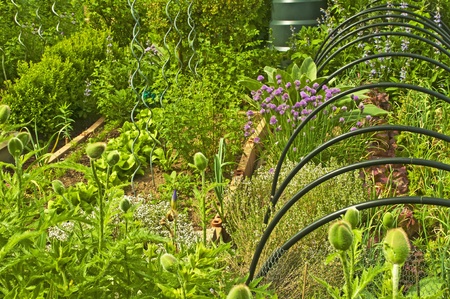1. Choosing the Right Raised Bed Location
When starting your spring vegetable and herb garden, picking the perfect spot for your raised bed is essential for a thriving harvest. Aim to place your raised bed in an area that receives at least 6-8 hours of direct sunlight each day, as most spring crops like tomatoes, peppers, and basil need plenty of sun to grow strong and healthy. Also, make sure the ground is well-drained to prevent waterlogging, which can damage roots and invite disease. Avoid low spots in your yard where rainwater may collect. Another important factor is proximity to a water source—having your beds close to a hose or irrigation system makes watering easier and ensures your plants won’t suffer during dry spells. The table below highlights key considerations when choosing a raised bed location:
| Factor | Why It Matters |
|---|---|
| Sunlight Exposure | Ensures robust growth and higher yields for most vegetables and herbs. |
| Drainage | Prevents root rot and keeps soil from getting soggy. |
| Water Access | Makes regular watering convenient, especially in hot weather. |
By carefully selecting the right location, you set the stage for a successful and productive raised bed garden this spring.
2. Preparing and Amending Your Soil
One of the most crucial steps for a successful raised bed garden is getting your soil right from the start. Using high-quality soil ensures your spring vegetables and herbs get the nutrients, drainage, and structure they need to thrive. Here are some best practices for filling your raised beds:
Best Practices for Filling Raised Beds
| Layer | Material | Purpose |
|---|---|---|
| Bottom | Cardboard or Newspaper | Suppresses weeds and improves moisture retention |
| Middle | Coarse Organic Material (twigs, straw, leaves) | Aids drainage and encourages microbial activity |
| Top (12-18 inches) | High-Quality Soil Mix (see below) | Main growing medium for roots and nutrients |
Recommended Soil Mix for Raised Beds
- 40% screened topsoil (free of weeds and debris)
- 40% compost (homemade or certified organic)
- 20% aeration material (such as perlite, vermiculite, or coarse sand)
Compost and Organic Amendments
Adding compost is one of the easiest ways to boost nutrient levels and improve soil structure. Aim for at least 2-3 inches of compost worked into the top layer each season. For targeted nutrition, consider adding organic amendments like:
- Dried blood meal (for nitrogen)
- Bone meal (for phosphorus)
- Kelp meal or greensand (for potassium and trace minerals)
Soil Testing: Why It Matters
Before planting, test your soil’s pH and nutrient content. Many local county extension offices offer affordable soil testing kits. Most vegetables and herbs prefer a slightly acidic to neutral pH (6.0–7.0). Adjust with lime to raise pH or elemental sulfur to lower it if needed.
Quick Soil Amendment Guide
| Nutrient Deficiency | Symptom | Suggested Amendment |
|---|---|---|
| Nitrogen | Pale leaves, slow growth | Add composted manure or blood meal |
| Phosphorus | Purple leaf veins, poor root growth | Add bone meal or rock phosphate |
| Potassium | Browning leaf edges, weak stems | Add greensand or kelp meal |
Taking these steps to prepare and amend your raised bed soil will set the foundation for healthy, productive spring vegetables and herbs all season long.

3. Selecting Spring Vegetables and Herbs
When it comes to raised bed gardening in spring, choosing the right vegetables and herbs is key to a productive season. Cool-season crops thrive in the moderate temperatures of early spring across most American regions. These plants are well-suited for raised beds because the soil warms up faster, giving you an earlier start on the growing season. Below is a handy table that highlights some top picks for spring planting, along with their ideal sowing times and basic care tips:
| Crop | Ideal Sowing Time | Care Tips |
|---|---|---|
| Lettuce | Early spring, as soon as soil can be worked | Keep soil moist, partial shade protects from heat |
| Spinach | 4-6 weeks before last frost | Prefers rich, well-drained soil; water regularly |
| Peas (snap or shelling) | As soon as soil thaws, typically late winter to early spring | Provide trellis; harvest pods regularly for continued production |
| Kale | Early spring or fall | Tolerates light frost; harvest leaves when young and tender |
| Cilantro | After last frost date or late winter in mild climates | Sow successively every 2-3 weeks for continuous harvests |
| Chives | Early spring after danger of hard frost has passed | Perennial in most zones; snip leaves often to encourage growth |
These cool-season favorites not only provide fresh greens and flavorful herbs for your kitchen but also mature quickly, making them perfect for succession planting. To get the most out of your raised beds, consider mixing these crops together—herbs like chives and cilantro can help deter pests naturally while thriving alongside leafy greens. Whether you’re growing crisp lettuces for salads or fragrant cilantro for salsas, starting with these spring staples sets your garden up for success.
4. Planting Guidelines for a Productive Spring
Getting the most out of your raised bed garden this spring starts with smart planting decisions. Knowing when to plant, how much space to leave between crops, and which plants help each other thrive is key to a healthy, high-yielding garden. Here’s how you can optimize your spring vegetable and herb beds:
Timing Your Planting
Spring vegetables and herbs have different preferences when it comes to soil temperature and frost tolerance. Use local frost dates as your guide and check seed packets for specific timing information. For example, cool-season crops like lettuce, spinach, and peas can go in early, while warm-season favorites like tomatoes and basil need to wait until after the last frost.
| Crop | Best Planting Time |
|---|---|
| Lettuce & Spinach | 2-4 weeks before last frost |
| Peas | As soon as soil can be worked |
| Carrots & Radishes | 2 weeks before last frost |
| Basil & Tomatoes | 1-2 weeks after last frost |
Spacing for Healthy Growth
Proper spacing prevents overcrowding, reduces disease risk, and ensures each plant gets enough sunlight and nutrients. Raised beds make it easier to follow intensive planting methods, but don’t skimp on space—crowded roots lead to stunted growth. Refer to the following table for common spring crops:
| Crops | Spacing (inches) |
|---|---|
| Lettuce (leaf) | 6-8 |
| Carrots | 2-3 |
| Basil | 10-12 |
| Tomatoes (staked) | 18-24 |
The Power of Companion Planting
Companion planting helps maximize yields by pairing plants that support each others growth or deter pests naturally. For example, basil improves tomato flavor and helps repel certain insects, while carrots and onions planted together can confuse carrot flies. Try these classic combinations:
| Main Crop | Companion(s) |
|---|---|
| Tomatoes | Basil, Marigold, Lettuce |
| Carrots | Onions, Chives, Lettuce |
| Lettuce | Radishes, Carrots, Chives |
A Few More Tips:
- Sow seeds in succession every 2-3 weeks for a continuous harvest.
- Add mulch after seedlings emerge to retain moisture and suppress weeds.
- If you’re short on space, use vertical supports for peas or trellis systems for vining beans.
By following these guidelines on timing, spacing, and companion planting, you’ll set your raised bed up for an abundant spring season packed with healthy vegetables and fragrant herbs.
5. Watering and Mulching Strategies
Proper watering and mulching are essential for the success of your spring vegetables and herbs in raised beds. Unlike traditional garden plots, raised beds tend to drain faster, which can be a blessing or a challenge depending on the season. Here’s how you can keep your plants happy and healthy:
Best Methods for Watering Raised Beds
Consistent moisture is key, especially during the unpredictable weather of spring. Consider these popular watering options for raised beds:
| Watering Method | Benefits | Best For |
|---|---|---|
| Drip Irrigation | Delivers water directly to roots, conserves water, reduces disease risk | Beds with densely planted veggies & herbs |
| Soaker Hoses | Even coverage, easy to install, affordable | Larger raised beds or those with mixed plantings |
| Hand Watering | Allows you to monitor individual plant needs, flexible | Small beds or containers, newly seeded areas |
How to Mulch for Moisture Retention
Mulching helps lock in moisture and keeps weeds at bay—a win-win for any gardener. Organic mulches like straw, shredded leaves, or untreated grass clippings are ideal for raised beds. Apply a 2–3 inch layer around your plants, being careful not to pile mulch against stems to prevent rot. Mulching not only conserves soil moisture but also regulates soil temperature as spring nights fluctuate.
Managing Spring Rain and Cold Snaps
Spring weather in the U.S. is notoriously unpredictable. Here are some quick tips:
- If heavy rain is forecasted, check drainage after storms to avoid soggy roots. Raised beds usually drain well, but if pooling occurs, consider adding more compost or organic matter.
- Drape row covers or frost cloths over your beds if a late frost is expected—these lightweight fabrics protect tender seedlings from sudden cold snaps.
Pro Tip:
Avoid overhead watering late in the day; this can promote fungal diseases during cool spring nights. Early morning watering is best for most spring crops.
6. Ongoing Care and Pest Management
Maintaining a thriving raised bed garden for spring vegetables and herbs requires consistent care and proactive pest management. Below are practical techniques to keep your plants healthy, encourage strong growth, and prevent common garden issues.
Techniques for Regular Maintenance
- Watering: Check soil moisture daily, especially during dry spells. Raised beds tend to drain faster, so deep watering in the morning is ideal.
- Weeding: Remove weeds promptly to reduce competition for nutrients and water. Mulching with straw or leaf mold can help suppress weed growth.
- Feeding: Apply a balanced organic fertilizer every 4-6 weeks to support vigorous plant development.
- Pruning: Trim back herbs like basil and mint regularly to promote bushier growth and prevent flowering too soon.
Natural Pest Deterrents
| Pest | Natural Deterrent |
|---|---|
| Aphids | Spray with a mix of water and a few drops of dish soap; introduce ladybugs as beneficial insects. |
| Slugs & Snails | Scatter crushed eggshells or diatomaceous earth around plants; set up beer traps in shallow dishes. |
| Caterpillars | Handpick off leaves; use floating row covers to protect young seedlings. |
Early Intervention for Common Problems
- Yellowing Leaves: Test soil drainage—overwatering is a common cause in raised beds. Adjust your watering schedule if needed.
- Mildew on Leaves: Ensure good air circulation by spacing plants appropriately and removing affected leaves at first sign of disease.
- Poor Growth: Rotate crops annually to prevent nutrient depletion and minimize disease buildup in the soil.
Quick Reference: Spring Garden Problem Solver
| Issue | Sign | Action |
|---|---|---|
| Nutrient Deficiency | Pale, stunted leaves | Add compost or organic fertilizer; test soil pH |
| Pests Visible | Bite marks or insects present | Use natural deterrents; inspect daily for early signs |
| Mold/Fungus | White spots or powdery residue | Remove affected leaves; increase spacing; avoid overhead watering |
Stay Observant for a Healthy Garden
The key to successful raised bed gardening is vigilance. By dedicating just a few minutes each day to inspection and care, you’ll catch potential problems early, keeping your spring vegetables and herbs flourishing all season long.


